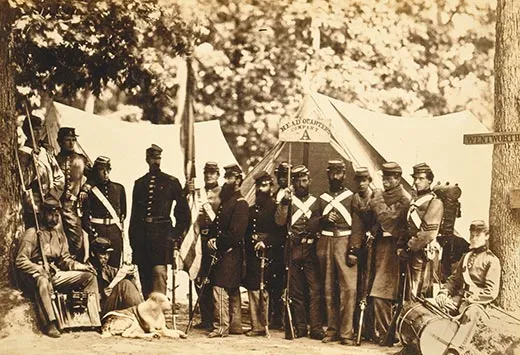June 1861: Anticipating the Onslaught of the Civil War
The “Races at Philippi” and Virginia is split in two and more from what happened in the Civil War in June 1861
/https://tf-cmsv2-smithsonianmag-media.s3.amazonaws.com/filer/civil-war-anticipation-New-York-8th-militia-camp-631.jpg)
Though the confederates had bombarded Fort Sumter two months earlier, signaling the start of the Civil War, there had been few additional clashes. On June 3, in Philippi, Virginia, Union forces mounted a two-pronged attack on a small group of Confederates. Taken by surprise, the Rebels ran off in retreat, some reportedly still in their pajamas, causing the papers to call the event the “Races at Philippi.” Even so, shots were fired, and 30 men were wounded, making it arguably the first major land action of the war.
Elsewhere all was anticipation. On a Cincinnati street, a conscription-aged young man stirred the emotions of Lucy Webb Hayes. “I felt that he was not a poor boy but one of our defenders,” she wrote June 13 to her husband, future president Rutherford B. Hayes, who himself had gone off to fight.
Nowhere was the sense of anticipation more acute than among the soldiers themselves. “We expect a fight every moment,” wrote Pvt. Benjamin Franklin Cochran to his mother. In the soldiers’ camps, rumor mills whirred. “The Northern papers say the Yankee army will celebrate the 4th of July in Richmond,” Confederate war clerk John Beauchamp Jones confided to his diary June 3, adding that he had heard “accounts of frightful massacres in Missouri, by German mercenaries.” His fellow Confederate, John H. Ervine of the 1st Virginia Cavalry, wrote to his wife, Ellen, on June 18: “I do not have any fears of being hurt if we do get in a fight.” He’d heard, he went on, that two Confederate soldiers had been able to fend off several hundred of the opposing army. And just the day before, his own camp had expected a skirmish, but the Union soldiers never showed up. “They had not the spunk,” he gloated.
Since Lincoln’s election seven months before, 11 slave-holding states, including Virginia, had seceded from the Union. But that decision had not been popular among all Virginians. On June 11, 1861, delegates from 32 counties in the northwestern corner of the state gathered at a hall in Wheeling to chart an unorthodox course: they wanted, in effect, to unsecede.
“We have no ordinary task before us,” declared the convention’s president, Arthur I. Boreman. “We come here to carry out and execute, and it may be, to institute a government for ourselves.”
On June 19, the New York Times reported that “about forty counties of Western Virginia, have, by a formal and unanimous vote, resolved to cut loose from the Old Dominion and form for themselves a new and independent State.” Days later, President Lincoln officially recognized the “Reorganized” government as part of the Union. The delegates had not yet chosen a name for what would become the nation’s 35th state. Some liked “Allegheny,” others “Kanawha.” Today, of course, we know it by a name that still bears the scars of its severance: West Virginia.
/https://tf-cmsv2-smithsonianmag-media.s3.amazonaws.com/accounts/headshot/david-zax-240.jpg)

/https://tf-cmsv2-smithsonianmag-media.s3.amazonaws.com/accounts/headshot/david-zax-240.jpg)